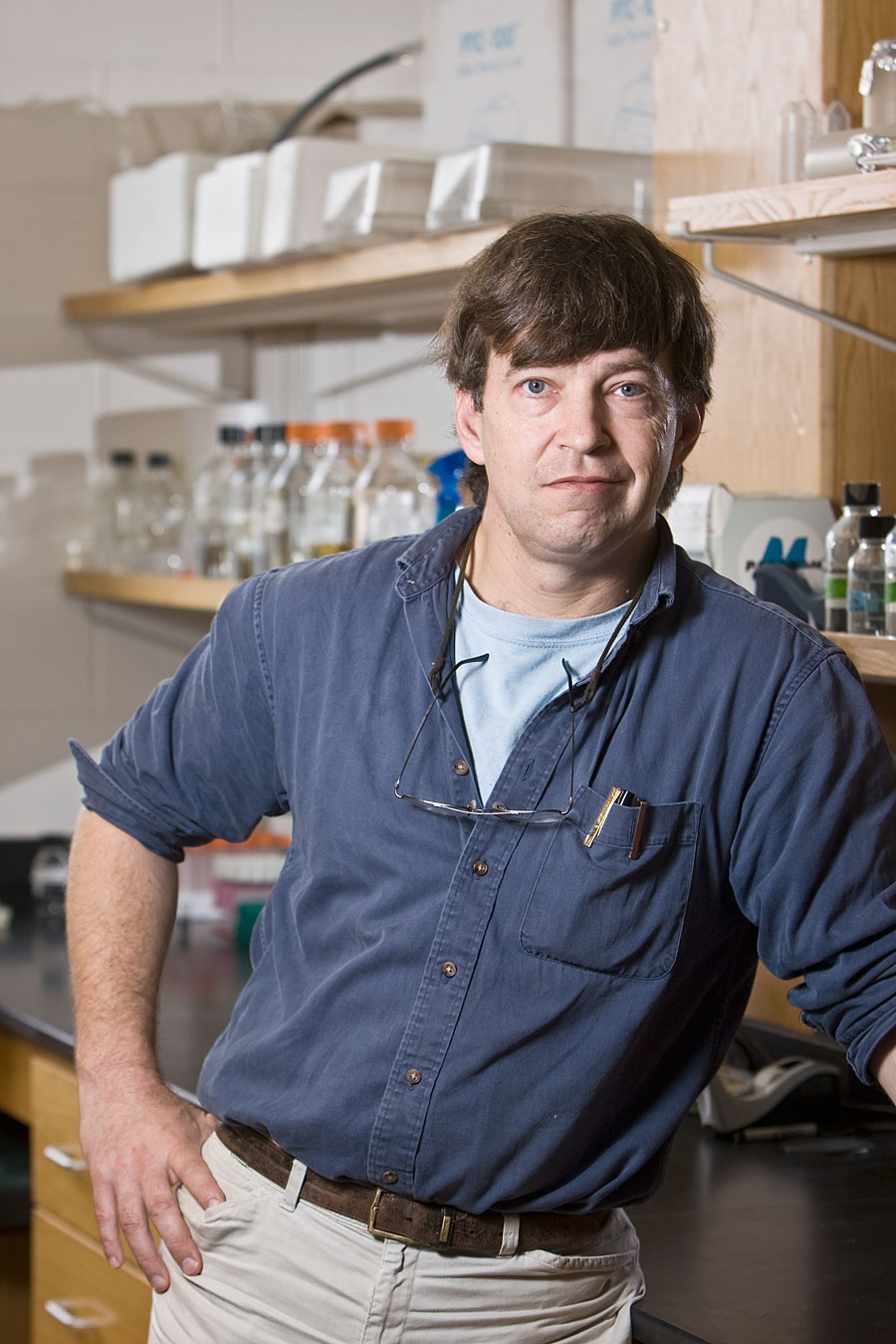Southerners may best know sorghum as a sweet, biscuit-topping syrup. But the small grain’s uses range from a dependable, drought-tolerant food crop to biofuel source, according to a UGA researcher who led a team that recently sequenced the plant’s genome.
“Sorghum’s importance is enormous,” said Andrew Paterson, a Distinguished Research Professor and director of the Plant Genome Mapping Laboratory, a joint unit of UGA’s College of Agricultural and Environmental Sciences and the Franklin College of Arts and Sciences.
Paterson and his collaborators-from as close as South Carolina and as far away as India, Pakistan and Germany-mapped and analyzed the genome of Sorghum bicolor, placing 98 percent of its genes in their chromosomal context. At 730 million bases or letters of DNA, sorghum has a genetic code a quarter the size of the human genome.
The results of the study appeared in the Jan. 29 issue of the international science journal Nature.
Drought tolerance makes sorghum important in dry regions like northeast Africa and the southern U.S. plains. It needs only half the water it takes to grow corn.
“Not nearly as much has been invested in sorghum as in corn,” Paterson said. “According to the United Nations Food and Agriculture Organization, sorghum yields increased less than 1 percent per year over the last 45 years, about half the rate of corn, rice and wheat yields. Something is wrong with this picture. If new information and tools from the sequencing change that, it’ll improve millions of people’s lives.”
The sorghum that Paterson studied is drought-tolerant, but its wild cousins can survive on even less water and resist more diseases and pests. Breeders can use the sequence as a tool to blend desirable traits into more improved commercial plants.
The sequenced sorghum genome also is being used to improve biofuel crops like sugarcane and Miscanthus, a genus of 15 species of perennial grasses that is a leading biofuel crop in Europe. These plants have much larger and more complicated genomes than sorghum, a close relative that can be a guide to accelerating their improvement.
In the U.S., it’s unclear whether Miscanthus or switchgrass will dominate the biofuel arena, but recent side-by-side studies show that Miscanthus out yields switchgrass by as much as three to one.
Sorghum also is used to make biofuel and currently is the number two source of fuel ethanol in the U.S. Corn is first. There is a shift taking place away from seed-based biofuel produced today to cellulose-based production, a process for which sorghum also shows great promise. That is why the U.S. Department of Energy’s Joint Genome Institute got involved with sorghum sequencing.
The sorghum genome sequence also has other uses. Sorghum’s close cousin Johnson grass is one of the world’s worst weeds. Paterson hopes that by using the sequence, researchers can find better ways of controlling it.
A third use of sorghum’s genome sequence will be to gain insights into the reasons that sorghum, rice and other cereals are different from one another.
Sorghum is only the second grass genome sequenced. Rice was the first. While the two grasses are similar-93 percent of the genes present in sorghum are also found in rice-the differences are important enough to warrant closer inspection.
For example, Paterson’s team discovered that sorghum’s seed protein genes are completely different than the seed protein genes contained in rice. But they don’t know how and why.
“The genes don’t just stand out and say, ‘Here I am. This is why I’m different from rice,’ ” Paterson said. “We have a lot of new questions to ask.”
Paterson said he would like to continue to build on his 17 years of sorghum research to find out what happened to sorghum’s and rice’s common ancestor millions of years ago to form the plants that sustain us today.


